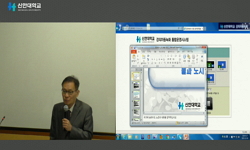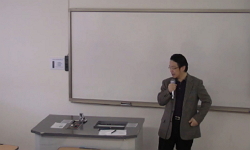City is where modernity was born it has been clinical lab of modem society and 'library . Also, it is the hero of modernization and the transformer that have led civilization. Elements of modernity can never he embodied better in any place but in the ...
http://chineseinput.net/에서 pinyin(병음)방식으로 중국어를 변환할 수 있습니다.
변환된 중국어를 복사하여 사용하시면 됩니다.
- 中文 을 입력하시려면 zhongwen을 입력하시고 space를누르시면됩니다.
- 北京 을 입력하시려면 beijing을 입력하시고 space를 누르시면 됩니다.
https://www.riss.kr/link?id=A76149179
- 저자
- 발행기관
- 학술지명
- 권호사항
-
발행연도
2004
-
작성언어
Korean
- 주제어
-
등재정보
KCI등재후보
-
자료형태
학술저널
- 발행기관 URL
-
수록면
186-214(29쪽)
-
KCI 피인용횟수
6
- 제공처
-
0
상세조회 -
0
다운로드
부가정보
다국어 초록 (Multilingual Abstract)
City is where modernity was born it has been clinical lab of modem society and 'library . Also, it is the hero of modernization and the transformer that have led civilization. Elements of modernity can never he embodied better in any place but in the experiences of city lives.
Questions extended by the thought: How can the modemization be look when it is reflected in the min-or of Korean modem society's bright and dark' sides and the curves of Seoul's history of 'development' ? How could the Korea n modem experiences be incarnated in the places? My research is initiated by the idea that we may rethink today through tracing the history, which inevitably caused today's Korean society. Therefore, [ will follow the traces of Seoul in 1950-60' s Korean films, winch will lead us to reaffirm the social strata of 'modernization process' after liberation and to reconstruct them now. Reading Seoul thought the films implies seeing Seoul through the gazes that operate for the structures of the films.
There can easily he seen an intense coalition of urban modernity and cinematic apparatus in numerous Korean films since Korean war: Seoul's dynamics are captured in camera's fast movements, tall building such as city hall, government building appear as spectacle. 1950' s Korea faced big socio-political that makes this era different from the 1960s: demolition and poverty due to Korean War, forced migration of population, weakened cultural/material foundation of the traditional social orders, influx of American pop ular culture. overflowing materialism, violence by police-state' s power, enforcement of anti-communist ideology and early establishment of the nation's subject in the cold war era, etc. People rushed into the city. Increased urban population played one of t he key roles for economic growth, especially industrialization and vice versa. Since 1960, the 3rd republic's industrialization policy accelerated people to leal' e the country and to rush into the city.
By raising several issues such as urban overpopulation, people's recognition of Seoul based on country/city binaries, 1 tries to trace 1950s' Seoul through the eyes of people that left homes and went up to Seoul. Watching <Money> (1958), <Mr. Wearying Comes to Seoul> (1962), <Three Maids> (1969), <Fog> (967), I focus on the Seoul where the modernization of 1950-60 was engraved.
The films above let us to see that the system of capitalism's monetary economy permeated beyond the boundary of the city by showing the dismal and misery in the country where no hope can be dreamed. By doing so, ironically, (Money) also depict Seoul as the city of hope and desire.
In <Three Maid>, women's labors catch our eyes. In 1960s, women provided the cheapest labors for rapid industrialization and urbanization. However women's labor was also a new threat to the bourgeois. TIle film shows how the late 1960s' Korean society brought women's labors to the city by consolation of the anxiety about 'the female threat' in nation's modernization and family structure, In fact, the symptorna t ic consolation was already seen in (Mr. Waryong Comes to Seoul) , where all the compelling desires in city /country, male/female, capitalist/laborer come to the end of pathos telling "After all, we all are in the hard times to lead our lives in Seoul." TIle film's moral emphasizing the compromise of all rile social contradiction than rile confrontation persuades the nation' s people - not citizen - to accept the social matters in their standings, only to imagine utopian modernization. As to the male subject(s) in <Fog>, where riley come back to Seoul like runaays, Seoul becomes a <virtual> space where neither they can leave nor they can rake root.
목차 (Table of Contents)
- 1-1. 서울이라는 도시, 그리고 도시 읽기
- 1-2. 근대성, 근대화 그리고 도시
- 2. 서울이라는 도시, 그리고 영화속의 근대경험
- 3. 서울, 서울, 서울
- 참고문헌
- 1-1. 서울이라는 도시, 그리고 도시 읽기
- 1-2. 근대성, 근대화 그리고 도시
- 2. 서울이라는 도시, 그리고 영화속의 근대경험
- 3. 서울, 서울, 서울
- 참고문헌
- Abstract
동일학술지(권/호) 다른 논문
-
- 한국영화학회
- 김금동(Kim Keum-Dong)
- 2004
- KCI등재후보
-
- 한국영화학회
- 김남수(Kim Sunam)
- 2004
- KCI등재후보
-
- 한국영화학회
- 김시무(Kim Seemoo)
- 2004
- KCI등재후보
-
- 한국영화학회
- 김정호(Kim Jung Ho)
- 2004
- KCI등재후보
분석정보
인용정보 인용지수 설명보기
학술지 이력
| 연월일 | 이력구분 | 이력상세 | 등재구분 |
|---|---|---|---|
| 2026 | 평가예정 | 재인증평가 신청대상 (재인증) | |
| 2020-01-01 | 평가 | 등재학술지 유지 (재인증) |  |
| 2017-09-22 | 학회명변경 | 영문명 : Film Studies Association Of Korea (Fisak) -> Korean Cinema Association (KCA) |  |
| 2017-01-01 | 평가 | 등재학술지 유지 (계속평가) |  |
| 2013-01-01 | 평가 | 등재 1차 FAIL (등재유지) |  |
| 2010-01-01 | 평가 | 등재학술지 유지 (등재유지) |  |
| 2007-01-01 | 평가 | 등재학술지 선정 (등재후보2차) |  |
| 2006-04-09 | 학술지등록 | 한글명 : 영화연구외국어명 : Film Studies |  |
| 2006-01-01 | 평가 | 등재후보 1차 PASS (등재후보1차) |  |
| 2004-01-01 | 평가 | 등재후보학술지 선정 (신규평가) |  |
학술지 인용정보
| 기준연도 | WOS-KCI 통합IF(2년) | KCIF(2년) | KCIF(3년) |
|---|---|---|---|
| 2016 | 0.58 | 0.58 | 0.59 |
| KCIF(4년) | KCIF(5년) | 중심성지수(3년) | 즉시성지수 |
| 0.58 | 0.55 | 1.055 | 0.29 |





 DBpia
DBpia






